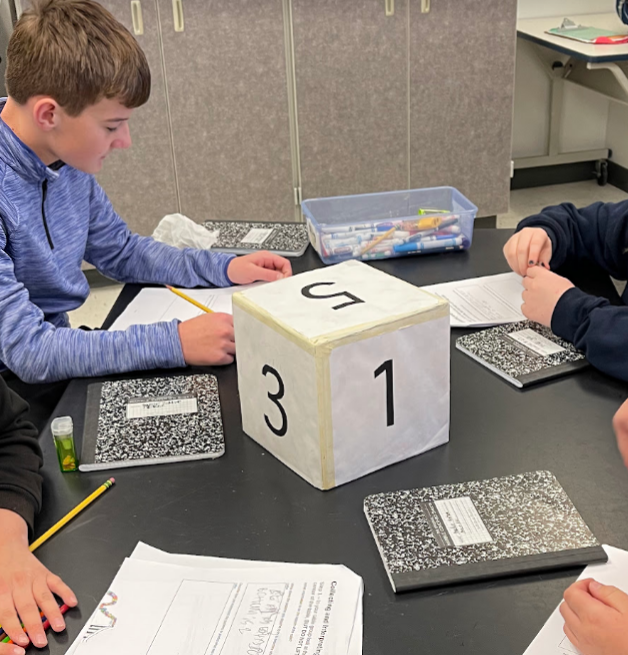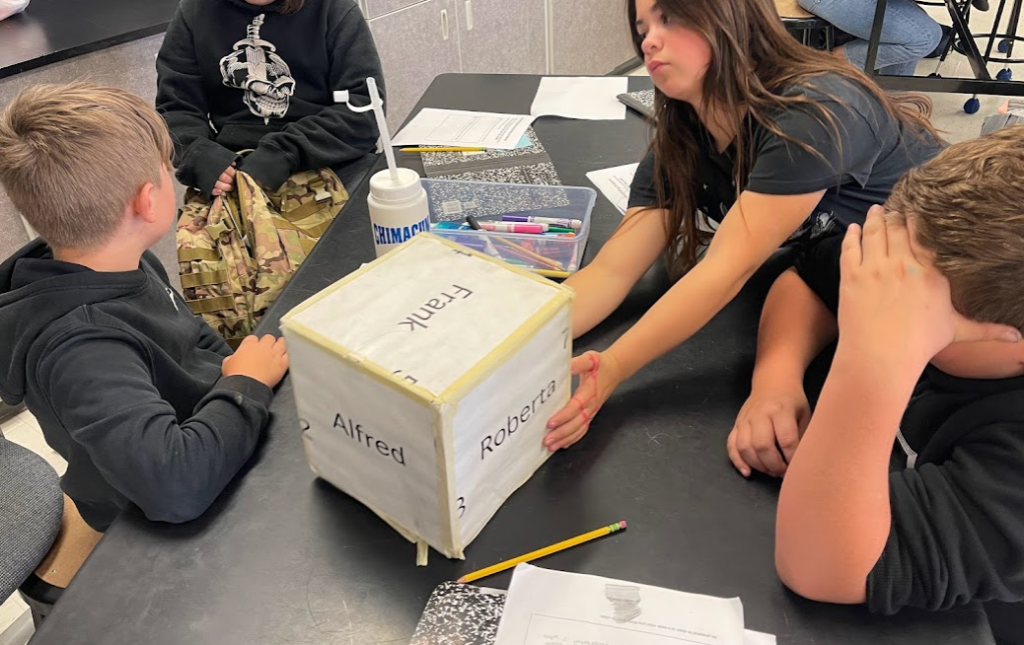In 2004 I was part of the North Cascades and Olympic Science Partnership (NCOSP). Of all the amazing activities we did in the years that I participated in NCOSP there is one activity that I am still doing with students 18 years later. The activity, also known as inference cubes, is a fantastic way to give students experience with using observations to make inferences! I call the activity Observation vs Inference and use the document below that I got my first year with NCOSP:
The activity starts with a cube resembling a six-sided die and students are asked to figure out what is on the bottom of the cube. One of the other Science teachers at my school made the cubes and I’m still using those today! In order to keep students from peeking under the cube to see what’s actually there, he purposefully left the bottom off of the cube. We give examples of science concepts that are well known and have plenty of evidence to support them that we have never directly observed, such as what the Earth’s core is made of.
Students are asked to support their ideas with evidence by finding patterns with the numbers they can see to prove why their idea of what is one the bottom is correct without being able to ever see it directly. Once they get comfortable with the process student teams are given a more complex cube with words and numbers on each face!
This has been a great activity to teach students the difference between observation and inference and I can refer to it all year long whenever students need to remember the difference. I recently Googled observation and inference as well as inference cubes and found a couple of resources that are quite helpful.
Here’s a pdf with a template for the cubes.
Here’s a blog called Inquiry Cubes with more types of cubes than the two shown above.
This is a great activity if you can make enough sets of cubes for each team to have one. Having physical cubes that students can manipulate is very helpful to students. I’ve done this activity with students in grades 5 through 8 and it works well.









































































